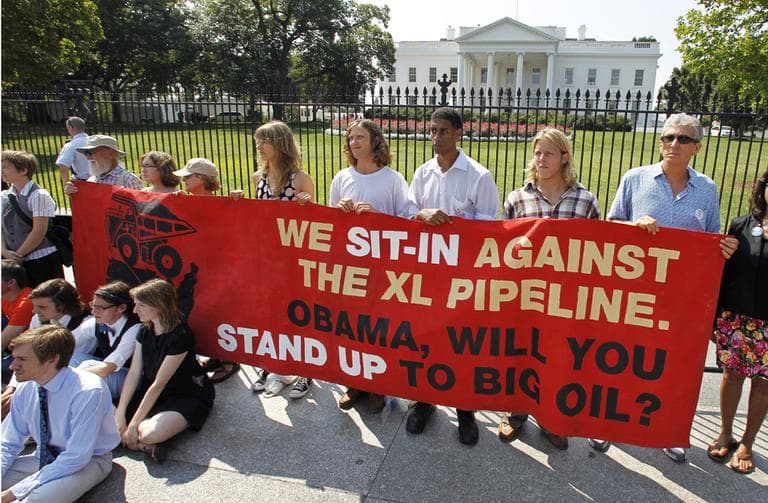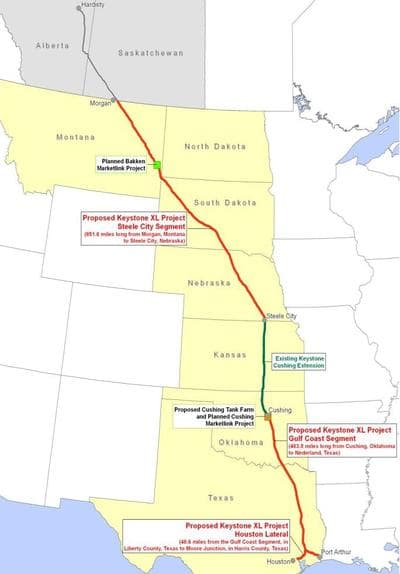Advertisement
Drawing A Line In The Tar Sands
ResumeWe’re debating the thousand mile pipeline that would cut across the U.S., from Canada’s tar sands to the Gulf of Mexico. The “Keystone XL” pipeline.

The tar sands of western Canada make some of the dirtiest oil production in the world. But at a time when everybody wants energy, hungry eyes are on Canada’s heavy tar sands oil.
A huge new proposed pipeline, the Keystone XL, would send that tar sands oil 1,700 miles south, from Canada into the United States, across the Great Plains and six American states to Houston and the Gulf of Mexico.
Supporters say it would be an energy and jobs bonanza. Opponents say it would mean “game over” for the global climate. A disaster.
This hour On Point: debating the Keystone XL pipeline.
-Tom Ashbrook
Guests
Michael Levi, senior fellow at the Council on Foreign Relations, director of the Program on Energy Security and Climate Change.
Alex Pourbaix, President of Energy & Oil Pipelines for TransCanada, the Canadian energy company that plans to build the Keystone XL pipeline.
Randy Thompson, a rancher from Nebraska who is opposed to the Keystone XL pipeline. He’s become a local hero of sorts among those opposed to the Trans Canada pipeline.
Susan Casey-Lefkowitz, director International Program, Natural Resources Defense Council.
From Tom's Reading List

The Atlantic "Despite the fact that Obama isn't even in the White House — he's on vacation — the demonstrators have been wildly successful in provoking public attention: the Tar Sands Action has been Google's number one trend for the past four days, and has garnered celebrity support from actors Mark Ruffalo and Sophia Bush, along with Radiohead's Thom Yorke."
The New Yorker "The tar sands begin near the border of Saskatchewan, around the latitude of Edmonton, and extend, in three major deposits, north and west almost to British Columbia. All in all, they cover—or, more accurately, underlie—some fifty-seven thousand square miles, an area roughly the size of Florida. It is believed that they were pushed into their present location seventy million years ago by the uplift of the Rocky Mountains."
The Wall Street Journal "While Canadian regulators are tightening environmental oversight of oil-sands production in Alberta, American environmentalists and some U.S. mayors are campaigning against what they see as another potential threat from Canadian oil: pipeline corrosion."
More
You can find the State Department's Final Environmental Impact Statement for the Keystone XL Pipeline Project here.
Randy Thompson on Keystone XL
http://youtu.be/PwrJ3KIiLo0
[googlemap title="Martell, NE" url="http://maps.google.com/maps?q=martell,+ne&oe=utf-8&rls=org.mozilla:en-US:official&client=firefox-a&um=1&ie=UTF-8&hq=&hnear=0x8796ed285e5a810d:0xa1ebe975e07dc5c4,Martell,+Centerville,+NE&gl=us&ei=5GxmTtf0FOX20gGSp_mxCg&sa=X&oi=geocode_result&ct=image&resnum=2&ved=0CCQQ8gEwAQ" width="500" height="350"]
Video of Washington, D.C. pipeline protest
http://youtu.be/yTPQV47gHNE
This program aired on September 7, 2011.